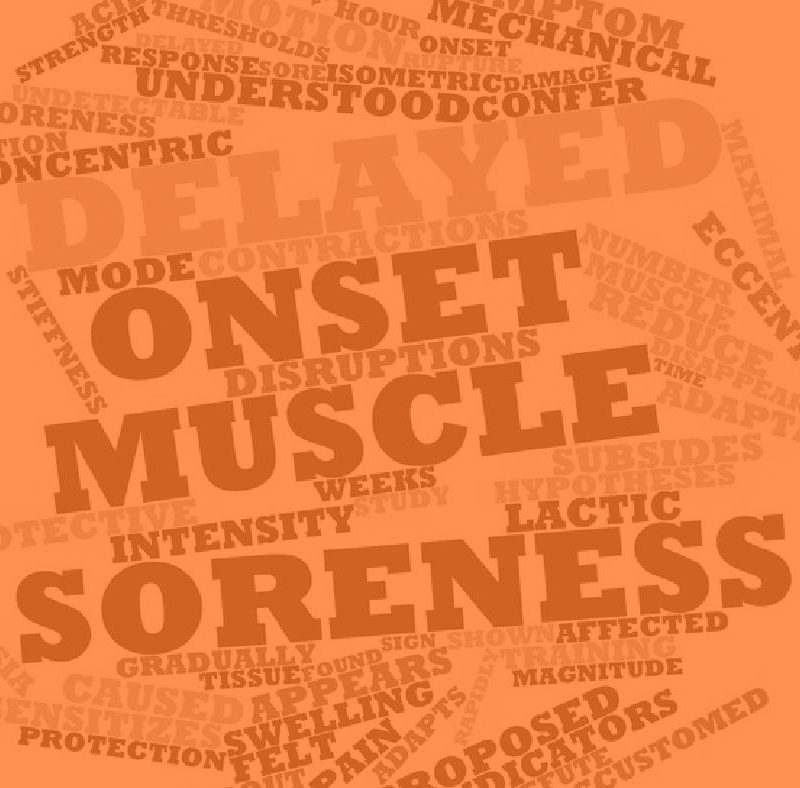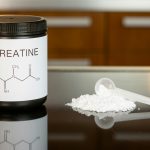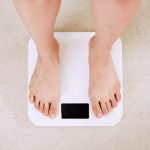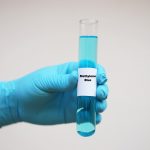
Every single person who has ever endeavored to take on a new exercise program learned what delayed onset muscle soreness (DOMS) feels like, even if they don’t understand why it occurs. Even conditioned athletes and seasoned fitness enthusiasts are likely to experience DOMS on the regular. Personal trainers may come to find that some clients are affected more than others, as are different muscle groups, or perhaps different kinds of activities prove to elicit more or less DOMS.
What is really happening when we feel sore for several days after a workout and is there anything we can do to recover more quickly or mitigate this sometimes unpleasant experience?
What is DOMS?
Delayed onset muscle soreness is the experience of tenderness or pain in a muscle that was challenged or taxed occurring within 12 to 96 hours of an activity. While this is a temporary condition, it can often be debilitating for some people, and certainly can discourage beginners from returning to a workout when they quite literally cannot walk the next day.
Depending on the intensity of exercise, swelling and inflammation can build up for days after a workout and can take up to five days for the muscles to heal completely (Lovering 2008). This swelling that occurs in the muscles will lead to an infiltration of white blood cells and prostaglandins (which are inflammatory). MedicineNet.com, Muscle Soreness (June 2014).
If proper rest is not taken between workouts, then muscle soreness continues to increase. To offset missing a workout, the first step an individual may take is simply to endure the pain. However, forcing continuous exercise when the body needs recovery will continue the influx of prostaglandins to the muscle fiber break, making the soreness/pain worse.
Following the lack of recovery and continued pain the individual will seek pain relief, usually in the form of an over-the-counter pain reliever, which is likely to disrupt the healing process when taken chronically.
For most people, DOMS is most likely to occur when:
- Beginning a new exercise program
- Re-starting a program after an extended break
- Incorporating a brand new movement into your routine with which your body is unaccustomed
- When focusing on eccentric lifts, which are known to result in more soreness
- Engaging in an endurance activity longer than normal
This baffling experience is not fully understood by scientists. What they do know is that several clinical measurements are affected during the experience of DOMS. These include “elevations in plasma enzymes, creatine kinase, myoglobinemia (a condition in which myoglobin–an oxygen-binding iron protein–is present in higher than normal amounts), and abnormal muscle histology and ultrastructure; exertional rhabdomyolysis appears to be the extreme form of DOMS,” 1.
The theories of what may be happening include:
1) Structural damage: The high tension created as in the lengthening of a muscle under resistance (such as in the eccentric phase of a contraction) creates tears in the muscle fibers that, similar to other injuries, need to be repaired and hence, protected from further injury2. The experience of pain itself signals to our bodies that we need to protect that area or body part to prevent further injury. This makes sense since we know muscle recovery is important for muscle growth, and soreness may be a necessary signal allowing that recovery to take place.
2) Muscle fiber necrosis and metabolic damage: The damage to the muscle cell membrane damage leads to disruption of Ca++ homeostasis in the injured fibers; cell death will then peak about two days post-exercise. How might this explain pain? We need calcium ions for muscle contraction. If calcium can’t enter the cell because of membrane damage, and the cell dies.2 Simply, when a cell dies, an inflammatory response is triggered in order to promote healing. While this is also a mysterious, not-well-understood process, suffice it to say the body sends out “danger signals” when inflammation occurs. Pain is one of those signals.
This is not to say that inflammation itself is the cause of the pain. On the contrary, the inflammation is occurring in response to the “something” that caused the pain and is a protective mechanism. This is why taking any anti-inflammatory drugs while effective in reducing the experience of pain, may also slow the important work of muscle recovery.
3) Nerve irritation: Without getting too technical, the byproducts of post-exercise repair activity accumulate in the interstitium (the space between cells and tissue), which then irritate free nerve endings of the muscle’s sensory neurons. This can potentially contribute to the experience of DOMS.
Why might some people experience more DOMS than others?
Genetics
The gene alpha-actinin-3 or ACTN3 is present in all of us, but has three different variations (of which you will have one). One of those variations fails to produce the ACTN3 protein that is linked to speed, power, and strength, and instead produces more ACTN2 protein that is linked to muscle endurance activities. It’s hypothesized that those in the latter group will have a harder time building and recovering muscle tissue, and hence, may experience DOMS more severely than the ACTN3 protein synthesizers.
Another gene, Myosin Light Chain Kinase gene, is expressed in one of two forms—homozygote CC or heterozygote CA, the former of which was found to be linked in decreased muscle power following a marathon. Researchers hypothesized that decreased muscle power was indicative of more muscle damage, supported by the higher levels of creatine kinase in their blood. Subjective scores were not taken, but DOMS was inferred to be higher because of the increased creatine kinase.
Hormones
Women have higher levels of estrogen and subsequently lower levels of creatine kinase. The research is mixed but some have concluded that women with high estrogen will not experience the same degree of muscle damage, and therefore experience less soreness.3 However, others postulate that they actually do experience as much muscle damage but just recover more quickly.
What can we do about DOMS?
Being aware that DOMS is forthcoming is sometimes all we need to deal effectively with the discomfort. However, expected or not, this muscle pain is never pleasant and often can get in the way of other planned activities.
There are several ways to mitigate the results of new and intense training:
1. Engage in a warm-up: According to Dr. Priscilla Clarkson, a leading expert on the topic and a researcher at the University of Massachusetts-Amherst, engaging in a warm-up activity that elicits a rise in the muscle temperature by just one degree Celsius can significantly reduce the amount of muscle soreness experienced by athletes.
2. Sports-specific training: Exposing the muscles to repeated bouts of a specific exercise, or training in a manner mimicking that which the muscles will face during a particular event, allows for continual adaptation and lessens the likelihood of the body feeling quite as much punishment on (and after) the day of a big event.
3. Heat: Applying heat immediately after an activity will raise the temperature of the tissue and increase blood flow; increased blood flow can help promote healing.
4. Active recovery: Although this may be the last thing in which you wish to engage while coping with the pain of DOMS, gentle low-impact aerobic exercise may actually increase blood flow, which has been linked to diminished muscle soreness. This can be an effective cool-down after intense workouts, too.
5. Epsom Salt Bath: Try a warm bath containing Epsom salts instead. The warmth increases circulation, while the readily-absorbed magnesium in the Epsom salts can greatly diminish muscle pain.
6. Hydration: While quenching thirst during a tough workout makes logical sense, insufficient electrolytes in the body can also add to the sore muscle conundrum. Keep in mind that the human blood supply consists of approximately 82% water; as muscles train hard, their demand for oxygen-rich blood increases. Keeping a bottle of coconut water within easy reach accomplishes both hydration and replacement of lost electrolytes. Advise your clients to aim for a volume of water in ounces equivalent to half their body weight in pounds (a 150-pound person would need 75 ounces a day).
7. Medical or Kinesiology Tape: Seemingly magical, this special tape has channels throughout that gently lift the skin away from the fascia allowing space for more blood flow. Additionally, the tactile sensations the tape has on the skin provide feedback that disrupts the pain-gate phenomenon, by simply redirecting the sensation away from pain toward a neutral stimulus (tape on skin).
8. Ice: Often used to ease sore muscles, reduce swelling, minimize pain, has taken some flack in recent years as perhaps disrupting healing by reducing blood flow. However, there’s no denying that cold dulls pain and reduces inflammation, and so, it may still come in handy when muscles are too painful to bear. Some athletes are now full-on soaking in ice baths.
9. Massage/Myofascial Release: The stick is a plastic device that is used to increase circulation and to relax muscles. Handles on either side allow the user to glide the stick over sore muscles and release the fascia. These sticks are commonly used with runners and other athletes. A wooden rolling pin can also be used or good, old-fashioned foam-rolling can do the trick as well. Hiring a qualified manual therapist may produce the best results in reducing pain and recovering more quickly.
10. Rest: Perhaps a rest day is worth passing on the pills. Taking time off allows our body to repair itself. It’s amazing how it knows what to do for muscle recovery if we give it a chance to rest and heal. Chances are we will return from rest and recovery with newfound strength and mobility.
11. Topicals: Let’s not discount how instinctive it is for humans to want to apply something medicinal directly to the painful area. Several products fit the bill and have successful outcomes.
Arnica Gel: Categorized as a member of the sunflower family, the flowers and roots of the Arnica plant have proven beneficial as anti-inflammatory agents. Using a topical analgesic like Arnica can reduce the intensity of muscle soreness during the 72 hours following a run. Other over-the-counter topical products have also proven to reduce recovery time, owing to their content of ingredients such as menthol, magnesium, and/or aloe.
(It’s important to note that arnica is a well-known homeopathic remedy, but not all preparations include diluted ingredients if not labeled “homeopathic”, which is more likely to produce positive results.)
CBD: Cannabidiol, one of over 100 substances called cannabinoids found in hemp, can serve as a plant-based remedy for relief of chronic pain. The hemp plant resides in the same family as marijuana. Topically applied oils or creams consist of CBD plus the addition of hemp seed oil to appropriately dilute the preparation.
Cannabis-based compounds show promise as an anti-inflammatory agent, easing post-exercise DOMS. The human body produces its own endocannabinoids, which help regulate a majority of the body’s systems to maintain homeostasis. If the body overheats, for example, the endocannabinoid system recognizes the need to cool down, thereby triggering the sweat response. The pain response works similarly. CBD oil acts by stimulating our endocannabinoids to block pain more effectively.
Unlike tetrahydrocannabinol (∆(9) -THC), CBD utilized in this method will not elicit any significant psychotropic effects. Certainly, obtaining your medical marijuana card to address pain relief is an option to be discussed with a licensed medical professional.
BioFreeze: MenThe 3.5% menthol contained in this topical gel serves as enough of a skin irritant to “confuse” the electrical stimulation to the brain, effectively rerouting the brain’s attention away from pain. The gate control theory of pain describes how non-painful sensations can override and reduce the perception of discomfort. A painful sensation stimulates primary afferent fibers traveling to the brain via transmission cells. Activating these cells increases perceived pain.
In the gate control theory, a closed gate blocks input to transmission cells, thereby reducing any painful sensation. This theory further asserts that non-painful input (in this case, the cooling sensation created by the menthol) closes the nerve gates to any acute pain, thereby “distracting” the individual long enough to mimic the effect of a temporary analgesic.
ThermaCare Patches: These pain relief patches make use of drug-free heat cell technology, a combination of iron, oxygen, water, and salt. Once applied to bare skin, these heat cells activate a chemical reaction known as iron oxidation. By enabling heat to penetrate the affected tissue, the resulting increase in blood flow accelerates the body’s natural healing process.
Salonpas Patches: This company manufactures several pain-relieving patch products with different ingredients. Utilizing the process of transdermal penetration, the active ingredients in these patches allow for direct application to the affected area. In bypassing the stomach, the user can avoid potential undue gastric distress which often results from oral pain relievers. Since the patches also contain water, a cooling effect to the skin results from the process of evaporation.
Ingredients vary from methyl salicylate (derived from aspirin), levomenthol (sensation of cooling), capsicum (sensation of heat), diclofenac (NSAID), and even lidocaine–a known topical anesthetic. Much like an ice pack, the patches keep the sore area exposed to its effects for 6 hours.
Similar to heat therapy, cooling techniques also work wonders for easing sore joints and muscles resulting from overexertion are oftentimes used to ease muscle aches. It’s a natural salve or ointment made from the flower Arnica montana and is applied topically. Some users have found it speeds healing and can even reduce bruising.
Like anything else with unsettled science, the ideas here vary. Some other suggested approaches include:
- Anti-inflammatories: They may help reduce pain but may also hinder muscle growth since muscle damage is indeed an inflammatory process and suppressing it chronically may hinder progress.
- Following an anti-inflammatory diet: The main dietary strategies include adequate omega-3 fatty acids intake, reduction of saturated and trans-fats, and consumption of a diet high in fruits, vegetables, nuts, and whole grains and low in refined grains.
- Curcumin/turmeric or ginger supplements (which have, you guessed it, anti-inflammatory properties) prior to the workout.
What doesn’t work:
- Not moving at all (tempting, but you will likely reduce blood flow, slow healing, and feel more sore and stiff)
- Going right back at it like nothing (see gentle active recovery above!)
- Stretching (that’s right, static stretching will not make the pain go away)
- Fixating and fearing it (mind over matter—trust your body will heal and focus on what you can do)
Advising Personal Training Clients
Firstly, being properly prepared for the possibility of DOMS and working out smart ensures your clients don’t overdo it.
With first-time clients especially, encourage them to be well-hydrated the day before their first workout. Don’t try to “wow” them with what a tough trainer you are the very first session and scare them away from exercise forever. Ease them into an introductory workout in the muscle endurance training phase, beginning with a proper warm-up and ending with an adequate cool-down (to include foam-rolling, found to be especially helpful in reducing DOMS when performed post-workout)4,5.
Of all the suggested techniques, foam-rolling appears to have the most merit and efficacy. A 2015 study took a very close look at this and experimented with athletes who served as their own controls. They found that foam rolling significantly reduced soreness and improved speed, power, and muscular endurance scores when employed post-exercise.
Above all, encourage clients who are scared or put off by the experience of DOMS, and contrarily, remind them they don’t always have to be sore to know they got a good workout. While eccentric motions are more likely to produce DOMS and also build strength more efficiently, the degree of soreness one experiences does not have a linear relationship with strength and muscle growth.
References
1. Cheung, K., Hume, P.A. & Maxwell, L. Delayed Onset Muscle Soreness. Sports Med 33, 145–164 (2003). https://doi.org/10.2165/00007256-200333020-00005
2. Armstrong RB. Mechanisms of exercise-induced delayed onset muscular soreness: a brief review. Med Sci Sports Exerc. 1984 Dec;16(6):529-38. PMID: 6392811.www.ncbi.nlm.nih.gov/pmc/articles/PMC3094097/
3. Carter, A., J. Dibridge, and AC Hackney. “Influence of estrogen on markers of muscle tissue damage following eccentric exercise.” (n.d.): n. pag. PubMed. Web. 10 May 2017.
4. Pearcey, G. E., Bradbury-Squires, D. J., Kawamoto, J. E., Drinkwater, E. J., Behm, D. G., & Button, D. C. (2015). Foam rolling for delayed-onset muscle soreness and recovery of dynamic performance measures. Journal of athletic training, 50(1), 5-13.
5. Healey, K.C., Hatfield, D.L., Blanpied, P., Dorfman, L.R., and Riebe, D. (2014). The effects of myofascial release with foam rolling on performance. Journal of Strength and Conditioning Research. 28(1). 61–68
6. https://www.ncbi.nlm.nih.gov/pmc/articles/PMC3808259/#:~:text=Heat%20is%20commonly%20used%20in, change%20in%20deep%20tissue%20temperature.
7. J Am Coll Cardiol. 2006 Aug 15;48(4):677-85








